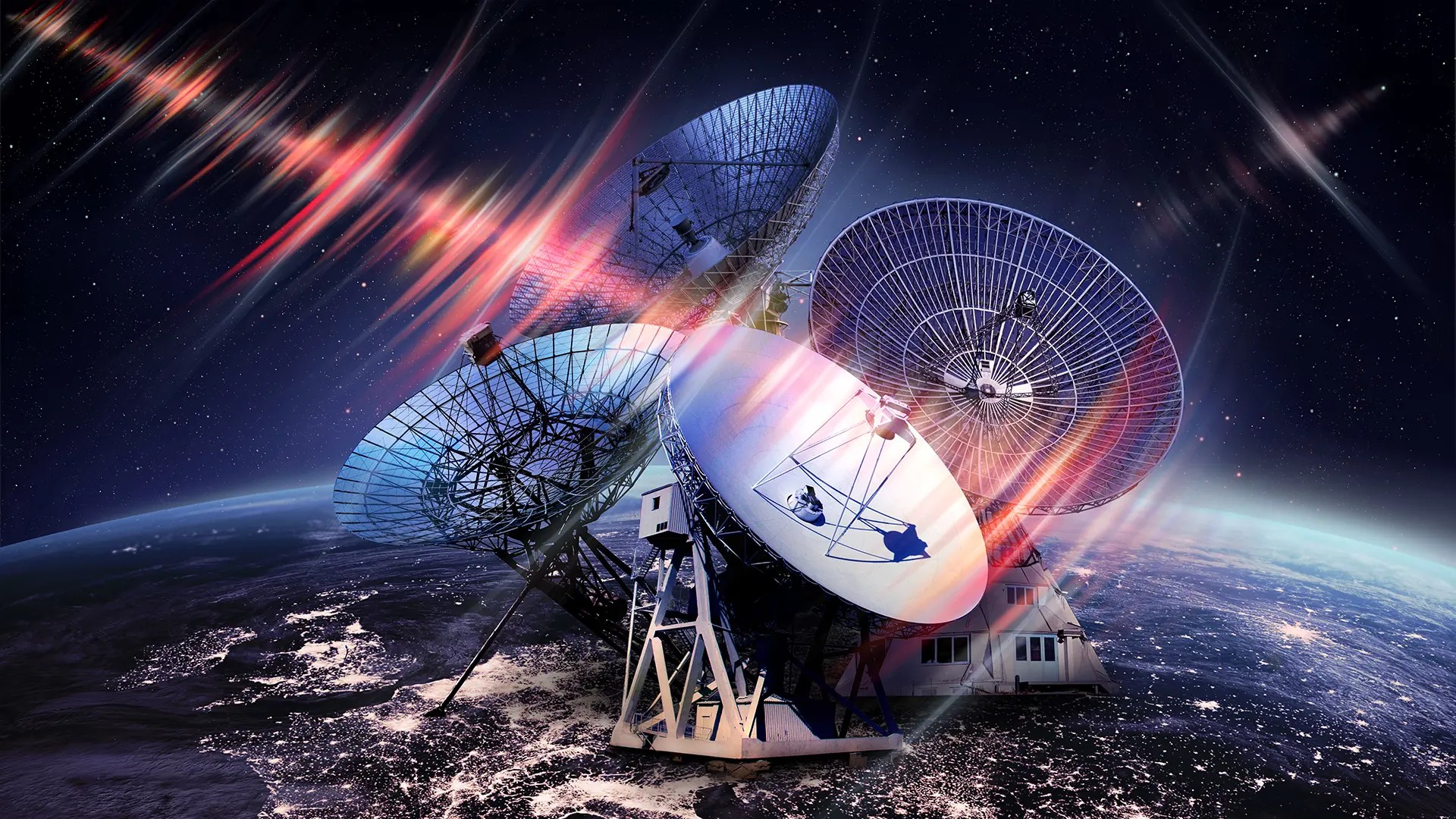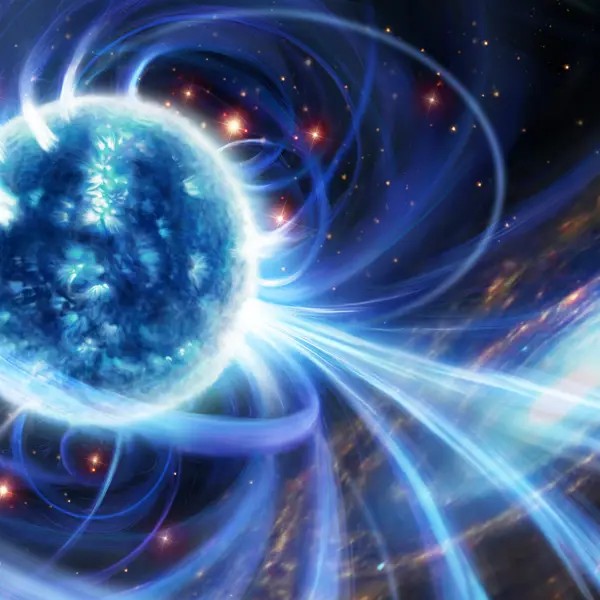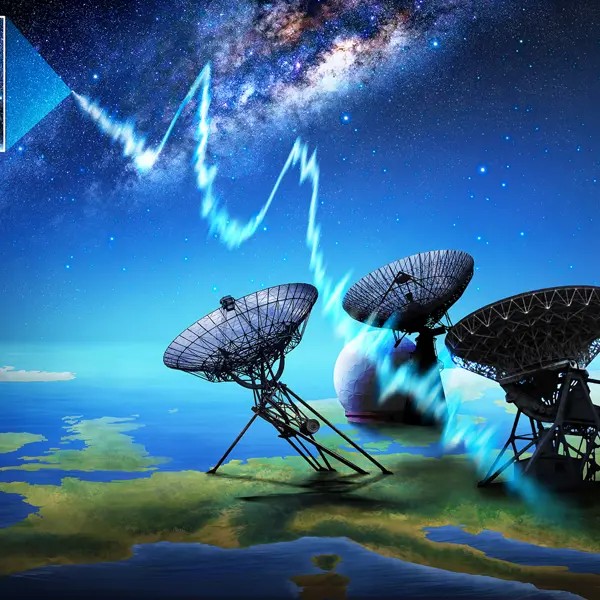
Scientists led by Chalmers’ Franz Kirsten have studied a famous source of repeating fast radio bursts – a still unexplained cosmic phenomenon. Comparing with earlier measurements, the scientists draw a conclusion with far-reaching consequences: any source of fast radio bursts will repeat, if watched long enough and carefully enough. The research team, a unique collaboration between professional and amateur radio astronomers, used four telescopes in northern Europe.
Fast radio bursts have mystified astronomers for over fifteen years. Often lasting only milliseconds, these brief, bright flashes of radio waves can be detected by radio telescopes from far out in the universe.
In a new study, scientists used radio telescopes in Sweden, Germany, the Netherlands and Poland to monitor a repeating source of fast radio bursts.
“This is the longest study yet of a single source of fast radio bursts”, says Wolfgang Herrmann, amateur radio astronomer and member of the science team.
Over several weeks, the four telescopes stared at the source for up to 12 hours per day.
The observing campaign was shared between four telescopes, the 25-metre diameter telescope in Onsala, Sweden, one 25-metre dish of the Westerbork Synthesis Radio Telescope in the Netherlands, the 32-metre telescope in Toruń, Poland, and the 25-metre telescope in Stockert, Germany.
The Stockert telescope is run by the non-profit organisation Astropeiler Stockert e.V., whose members are represented in the science team.
In total, the telescopes recorded 46 bright bursts, each lasting only a few milliseconds.
“This source had been previously studied with a much bigger radio telescope, FAST in China, so we knew what to expect. But we were really surprised by what we saw. Of the bursts that we collected, far more than we expected of them were very bright ones,” explains Franz Kirsten, astronomer at Onsala Space Observatory, Chalmers.
The observations point to two new conclusions
If this repeating source is typical, the astronomers reason, then they can draw two surprising conclusions.
First, the new observations point to a surprising new interpretation about the sources of fast radio bursts.
Of the bursts that have been recorded so far, almost all have only ever been seen once.
“Since some sources repeat, it has been speculated that all of them could. Now finally, we have statistics on a repeater that allows us to make a proper comparison to non-repeaters. And it looks like that could really be true: all fast radio bursts will repeat if you look long enough,” says team member Omar Ould-Boukattine, astronomer at Astron and the University of Amsterdam.
Second: the brightest fast radio bursts could be seen at vast distances.
“We think bright bursts like these could be seen from the most distant galaxies known, like those discovered recently by the James Webb Space Telescope, which we see in light that has travelled to us since the universe was only a few hundred million years old”, says Marcin Gawroński, team member at the Nicolaus Copernicus University in Toruń, Poland.
Though scientists don’t yet know what causes fast radio bursts, there are many signs that connect them to dense, magnetised remnants of exploded stars called magnetars and neutron stars.
“If we can see fast radio bursts from the time when the very first stars and galaxies were shining, that would give us a completely new way of accessing that time in the universe’s history”, says Franz Kirsten.
More about the research
The research results are published in paper, A link between repeating and non-repeating fast radio bursts through their energy distributions, published on 4 January 2024 in the journal Nature Astronomy.
The science team is composed of Franz Kirsten (Onsala Space Observatory, Chalmers, Sweden), Omar S. Ould-Boukattine (ASTRON and University of Amsterdam, Netherlands), Wolfgang Herrmann (Astropeiler Stockert e.V.), Marcin P. Gawroński (Nicolaus Copernicus University, Toruń, Poland), Jason W. T. Hessels (University of Amsterdam, Netherlands), W. Lu (UC Berkeley, USA), Mark P. Snelders (University of Amsterdam, Netherlands), P. Chawla (University of Amsterdam, Netherlands), Jun Yang (Onsala Space Observatory, Chalmers, Sweden), R. Blaauw (ASTRON), Kenzie Nimmo (MIT, USA), Weronika Puchalska (Nicolaus Copernicus University, Toruń, Poland), P. Wolak (Nicolaus Copernicus University, Toruń, Poland), and R. van Ruiten (University of Amsterdam, Netherlands).
The source studied by the team was discovered on 24 November 2020 by the telescope CHIME in Canada in the constellation of Taurus. It is known by its catalogue number FRB 20201124A. The source belongs to a galaxy of similar size to the Milky Way, located so far away that light from the galaxy has travelled nearly 1.3 billion years to reach us.
Contacts
Robert Cumming, astronomer and communicator, Onsala Space Observatory, Chalmers University of Technology, Sweden, robert.cumming@chalmers.se, +46 70 4933114
Franz Kirsten, astronomer, Onsala Space Observatory, Chalmers University of Technology, Sweden franz.kirsten@chalmers.se +46 31 772 5532
See also press releases from Astron (English; Dutch) and from Nicolaus Copernicus University (English; Polish).
Contact
- Senior Research Engineer, Onsala Space Observatory, Space, Earth and Environment
- Communications Officer, Onsala Space Observatory, Space, Earth and Environment




